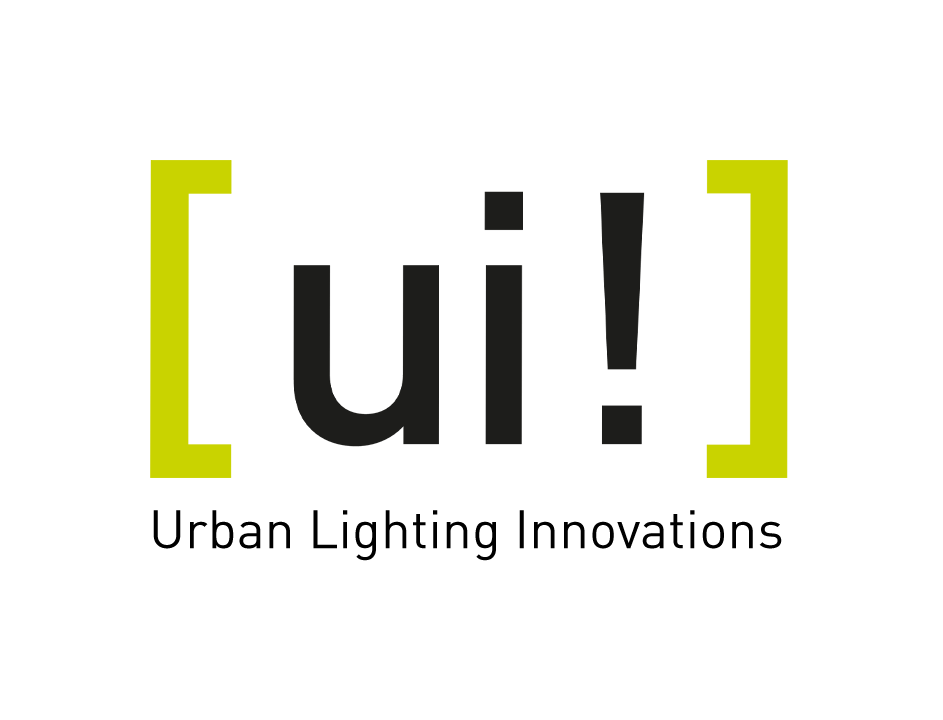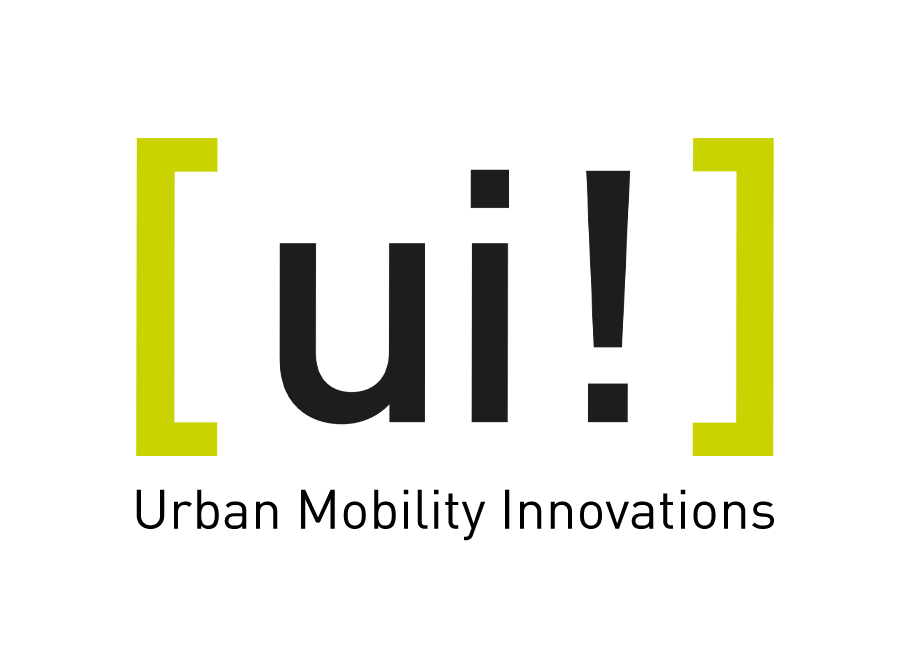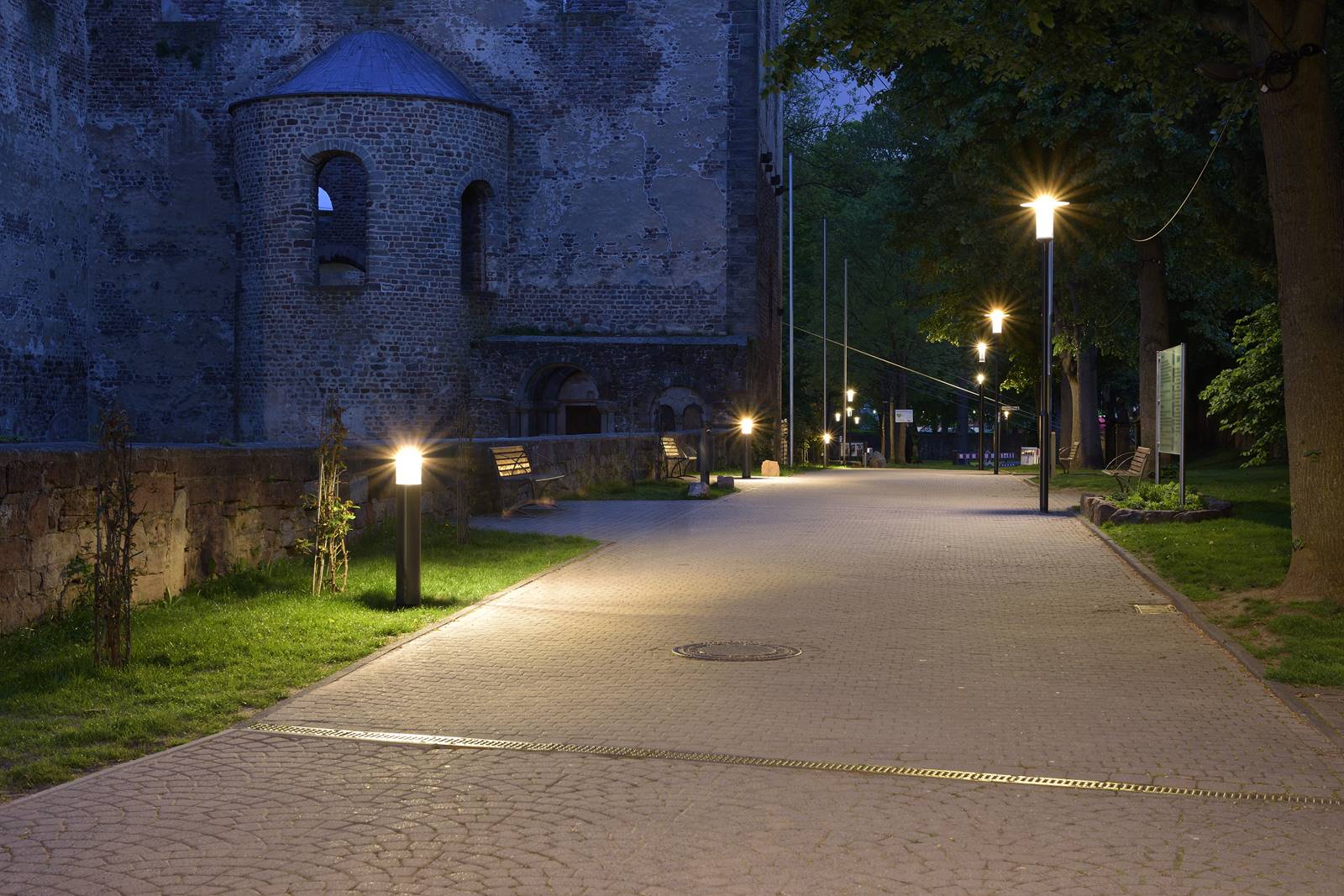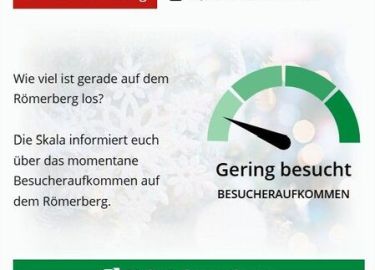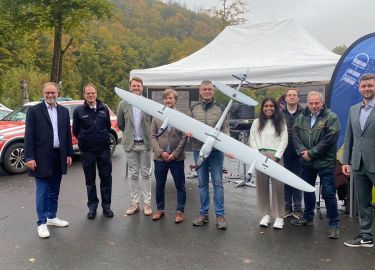Smart Lighting in Bad Hersfeld thanks to [ui!], Microsoft and Deutsche Bank
An innovative public lighting project starts in Bad Hersfeld, Germany
Bad Hersfeld. Lighting in public spaces is a special matter: it should be bright, but at the same time save energy and cause fewer CO2 emissions. Citizens' sense of security must be taken into account, but "light pollution" should be minimized. Keywords such as "insect-friendliness" describe other goals that are quite rightly associated with street lighting.This dilemma with partly conflicting objectives has not been resolved by current street lighting systems so far. Therefore, a new project that the district town of Bad Hersfeld will start together with Deutsche Bank, Microsoft and [ui!] Urban Lighting Innovations will test and implement new approaches.The project partners received further support from the TU Berlin, which accompanies the project scientifically, and the company Schréder, which supplies the lighting technology.
The magistrate decided to start the project on the proposal of Mayor Thomas Fehling.
Goals of the project
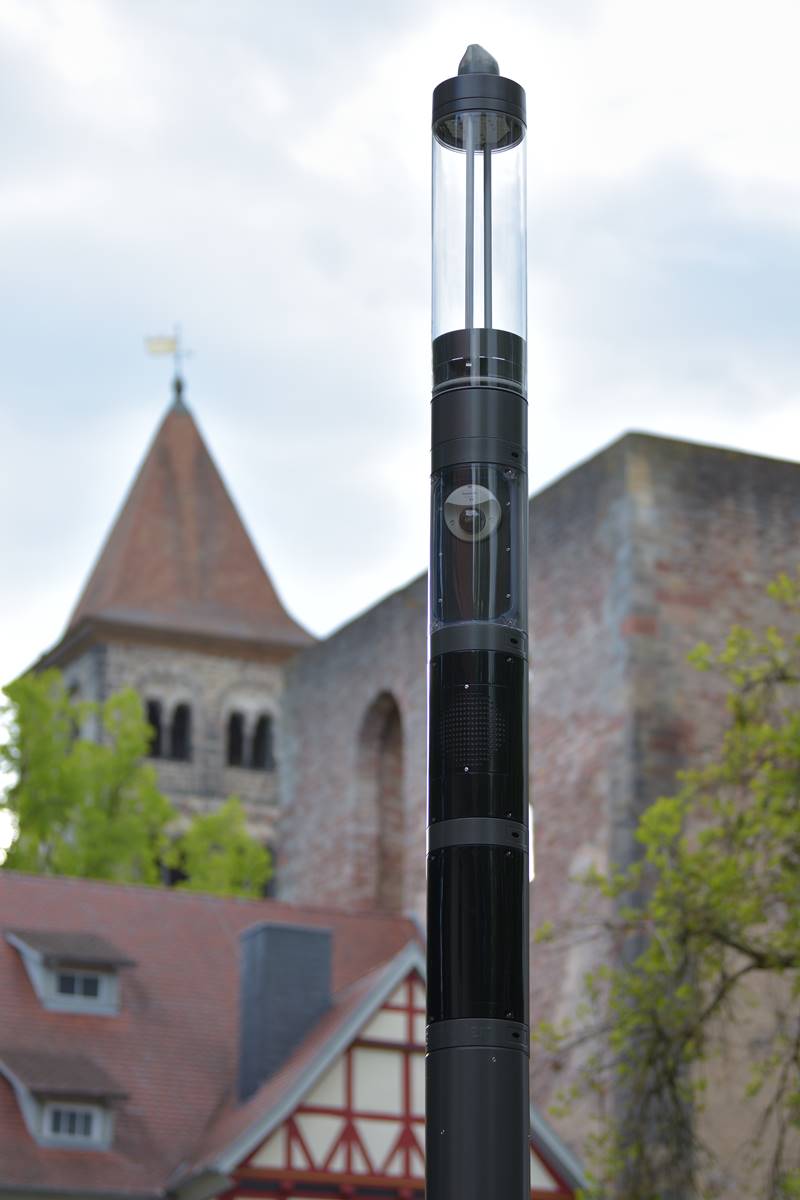 Intelligente Lampen und intelligente Masten – mit Platz für weitere Module wie WLAN, Umweltsensoren, Lautsprecher, Geschwindigkeitsmessungen u.v.a.m.According to the project partners, intelligent and integrative lighting control and the linking of different systems in particular can resolve the conflicting requirements of cost savings, energy efficiency, safety and climate protection, although not completely, to the greatest possible extent.
Intelligente Lampen und intelligente Masten – mit Platz für weitere Module wie WLAN, Umweltsensoren, Lautsprecher, Geschwindigkeitsmessungen u.v.a.m.According to the project partners, intelligent and integrative lighting control and the linking of different systems in particular can resolve the conflicting requirements of cost savings, energy efficiency, safety and climate protection, although not completely, to the greatest possible extent.- These include new approaches that make it possible to adjust brightness to traffic volumes and the needs of citizens through dynamic dimming.
- The latest luminaire technology now allows the so-called color temperature to be regulated between a neutral white tone and a yellowish light, often referred to as "amber". Insects and hikers in the Fulda floodplain need different light than road users on the city street.
- The lighting control technology will also be set up so that the light distribution and brightness adapt to the road conditions. This should increase road safety and further optimize light pollution and energy consumption of the luminaires.
- The collection of data on the operating status of the individual luminaires will help with fault analyses in the future. This will reduce time-consuming troubleshooting and downtime.
- The street lighting will also be established as a carrier for other additional "intelligent" devices. In 2019, for the Hessentag, the city already started to install sensors for noise and air pollutant emissions, for data on traffic volumes and types, or speed measurements, among other things, in the masts in the monastery district and on main roads. This could be further developed in the project. In the future, data on current weather conditions, for example, could also be recorded in this way.
City of Bad Hersfeld procures street lighting of the latest type
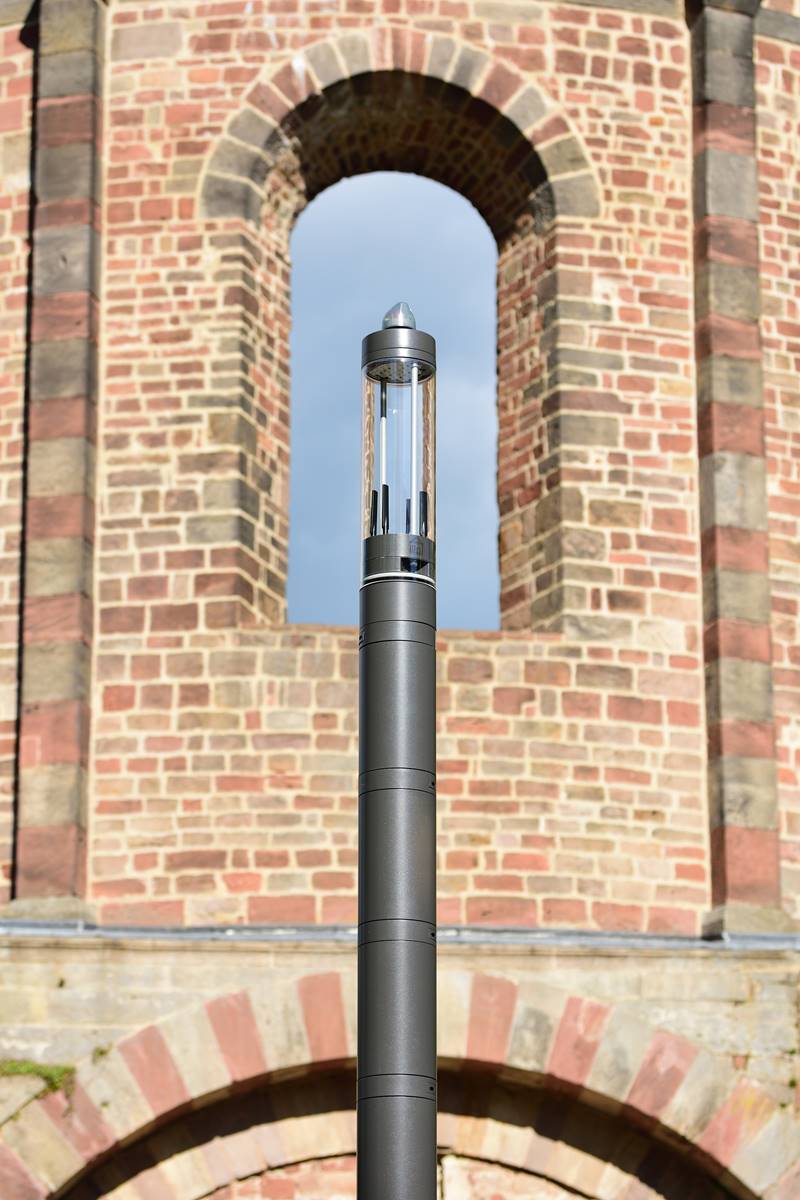 Das neue Projekt soll die 2019 zum Hessentag umgesetzte intelligente Beleuchtung im Stiftsbezirk für andere Teile des Stadtgebietes weiterentwickelnA share of the earmarked investment funds for street lighting amounting to 220,000 euros is now flowing into the project as the city's share. A necessary prerequisite is that the latest generation of street lights are now being procured, which can also process the signals from the lighting control system and the artificial intelligence (AI) used.
Das neue Projekt soll die 2019 zum Hessentag umgesetzte intelligente Beleuchtung im Stiftsbezirk für andere Teile des Stadtgebietes weiterentwickelnA share of the earmarked investment funds for street lighting amounting to 220,000 euros is now flowing into the project as the city's share. A necessary prerequisite is that the latest generation of street lights are now being procured, which can also process the signals from the lighting control system and the artificial intelligence (AI) used.
160 new streetlights will be installed this year in those parts of the city that have not yet been converted to LED technology. Specifically, these are
- on the northern city ring road, areas of Dippelstrasse, Wehneberger Strasse, Uffhäuser Strasse and Meisebacher Strasse,
- Berliner Straße between Hainstraße and the federal road B 62 and
- Parts of the Eichhof estate.
Services of project partners
The project has a total investment volume of around 791,000 euros. In addition to the municipal share of 220,000 euros, 571,000 euros will be contributed by the partners for implementation in Bad Hersfeld, e.g. for
- Stability tests and the retrofitting of street lighting poles,
- Services for the supply and operation of sensors for recording weather and environmental influences, including data evaluation (e.g. exceeding threshold values for air pollutants),
- the development of an app for the possible individual control of light intensity by citizens,
- the integration of data into the Bad Hersfeld Smartcity Cockpit and a future climate protection monitor,
- AI-based software solutions for energy consumption calculations, operational forecasts and demand-based as well as weather-dependent lighting control.
The key message of the project is that simply replacing old high-consumption lighting technology with LED lighting technology without any benefit to people or the environment is no longer a viable option.
The project will be implemented step by step starting in July and will last one year in order to cover all weather-related and seasonal requirements for public lighting.
The [ui!] Urban Lighting Innovations GmbH will implement and operate the entire project within a new, holistic service. The [ui!] solutions are based on the Microsoft Azure cloud platform. Deutsche Bank offers innovative solutions for financing smart city projects that support the public sector in achieving its ESG (Environmental, Social and Governance) goals more quickly. The entire project is being scientifically supported by the Department of Lighting Technology at the Technical University of Berlin.
"I am pleased that the magistrate has spoken out unanimously in favor of the project." sums up Mayor Fehling the attitude of the body on the subject of climate protection.
The project will be publicly presented at the next city council committee for urban planning, environment and climate. The meeting will begin on Wednesday, June 23 at 5 p.m. in the Heenes community center in Bad Hersfeld. All interested parties are cordially invited.




